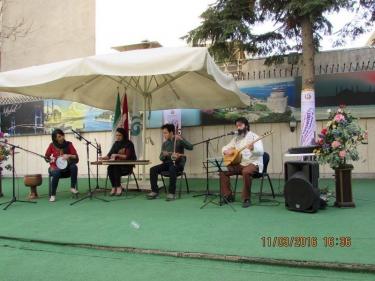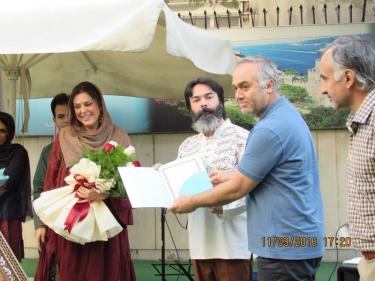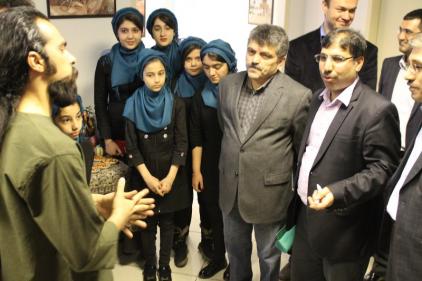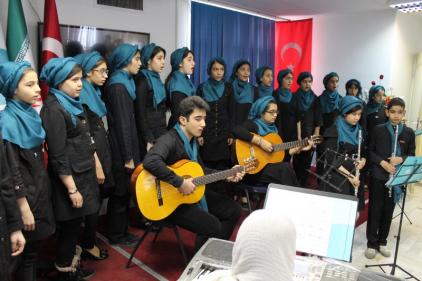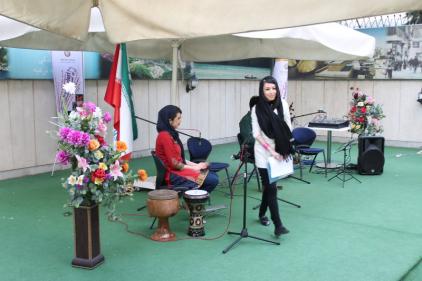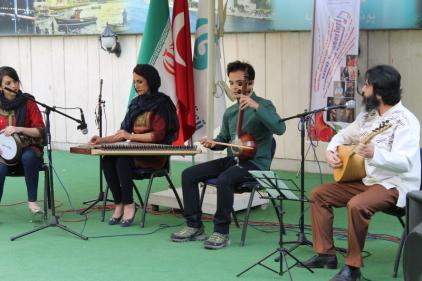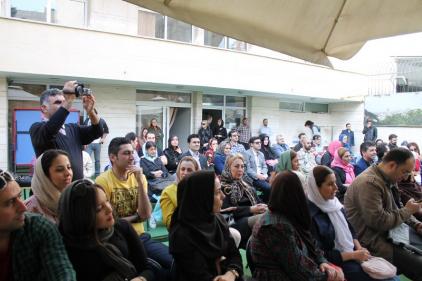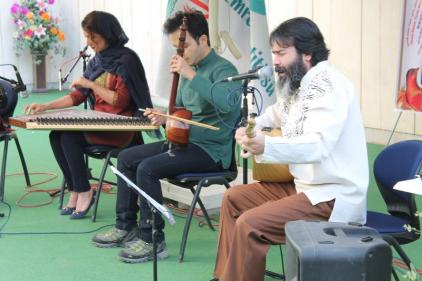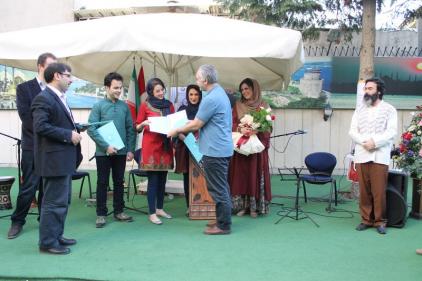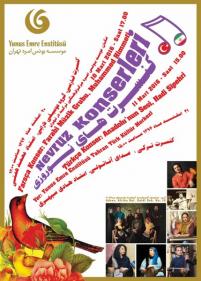Newroz Concerts in Tehran
Newroz Day and festival on the World Immaterial Heritage List was celebrated by a series of events organized in Tehran Yunus Emre Enstitüsü. Events commenced on March 10th, 2016 continued for two days.
First of the Newroz events commenced on March 10th 2016, Thursday was the “Haftsin” ceremony held in Tehran Yunus Emre Enstitüsü multi-purpose hall. The soloist of Farabi music ensemble Ali İbrahimi informed the audience on the cultural and historical elements of Haftsin in Persian mythology. Enstitü Director Assoc. Prof. Şamil Öçal greeted the audience, and Culture-Arts Coordinator Eyyüp Azlal narrated the common cultural elements of Newroz in Iran and Turkey before Newroz performance in the conference hall. Following the speeches, “Farabi Band Children's Choir” took the stage. Childrens' families gave support to the choir accompanying the Persian songs performed. Then Farabi ensemble performed unforgettable songs as O Travelling Merchant and Yellow Bride which moved the audience. Certificates of participation were granted to the artists at the end of the performance and a group photo was taken.
The events on the second day of Newroz celebrations were held in Tehran Yunus Emre Enstitüsü. Before the Anadolu’nun Sesi (Sound of Anatolia) performance, Turkish student Sara Aman read the Newroz poem she wrote. A performance by Anadolu’nun Sesi band followed. The conductor and soloist of the band, Hadi Sipehri presented the audience with a pleasant repertoire featuring folk song from all around Anatolia. Second day's Newroz performance was held in Enstitü's garden, and attracted a great deal of attention from the locals. The crowd that filled Enstitüsü's garden had an enjoyable time with songs performed by Anadolu’nun Sesi. The band performed folk songs as “Kınıfır Bedrebg”, “Ötme Bülbül Ötme” to which audience sang along. As the soloist of the band Hadi Sipehri performed the last song Kara Üzüm Habbesi, audience accompanied the song with the folk dance halay.
On Newroz:
The term Newroz means “new day” in Farsi. It is a celebration of the coming of spring on March 21st. The coming of spring signifies warmer weathers in our beliefs. As nature turns green, people go out on prairies and hold festivities. Newroz Festival, mentioned for the first time in 2nd Century Persian written sources and representing the first day of a year according to Persian calendar, is also referred to as New Year or Spring Festival. Newroz also observed by Persian, Turkish, Afghani, Georgian and Albanian people, symbolizes the awakening of nature. March 21st on which celebrations are held, was announced as World Newroz Festival by United Nations General Assembly in 2010.
In Turkish culture, Newroz marks the days Gokturks escaped from Ergenekon by melting the iron mountain, the coming of spring and the awakening of nature. All Turkish tribes and communities in the region stretching between East Turkistan and Balkans have celebrated March 21st every year since the 8th century B.C. Marked as the New Year in Chinese Zodiac and Jalali Calendar adopted by Malik Shah, March 21st is also referred to as the coming of spring in Diwan ul-Lughat al-Turk. Newroz termed as Nevruz-ı Asl, Nevruz-ı Arab, Nevruz-ı Bayati, Nevruz-ı Hejaz, Nevruz-ı Acem and Nevruz-ı Seba in Turkish literature and music, was celebrated as a national holiday in Seljuk and Ottoman states.
Newroz which has been celebrated uninterruptedly, is greeted in Iran as follows: Rumour has it, Shah of Iran Jamshid had a state tent built in Azerbaijan on March 21st returning from a world campaign. As the sun reflected from the decorated throne of Jamshid, multicoloured lights radiated, people made merry in festivities and feasts, and continue to celebrate this day as a festival every year since then.
Newroz is celebrated also in other Turkish states and communities. Newroz is called Nowruz in Azerbaijan, Navrız Meyrami in Kazakhstan, Nooruz in Kirgizistan, March Ninth in Turkish Republic of Northern Cyprus, Navrez by Crimean Turks, and Mevris by Western Thrace Turks.

